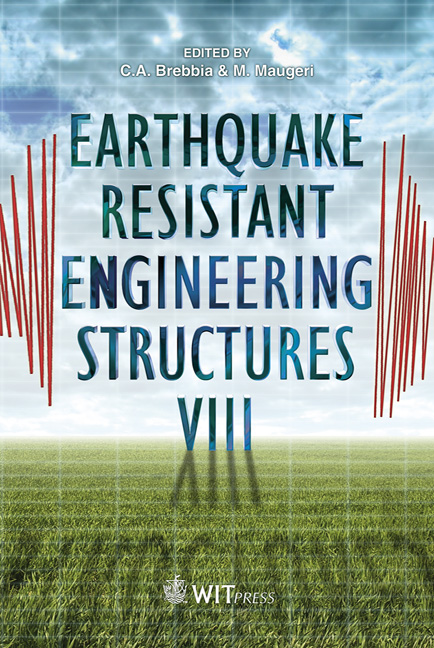Dynamic Interaction Of Adjacent Tall Building Structures On Deep Foundations
Price
Free (open access)
Transaction
Volume
120
Pages
11
Page Range
173 - 183
Published
2011
Size
499 kb
Paper DOI
10.2495/ERES110151
Copyright
WIT Press
Author(s)
M. A. Rahgozar & M. Ghandil
Abstract
In design of low rise structures the effects of soil-structure interaction are often ignored. However, these effects are considerable for heavy structures such as skyscrapers or multi-level highway structures. The existence of this interaction phenomenon can also be extended to the adjacent buildings. For example, in an area congested with many nearby tall buildings, to account for the proximity effects of adjacent buildings will become critical. Previous few studies conducted in this area, were limited to 2D finite element plain-strain models. Assuming plain-strain for foundation soil may be valid, however, for a building structure which has limited dimensions in plan, this assumption could be erroneous. In the current study, in order to capture the proximity effects on the response of adjacent buildings under earthquake motions, 3D models of 15 and 30 storey building structures on group piles are used. The foundation soils considered are clay and sand. Dynamic analyses are performed under horizontal components of several actual earthquakes. Three different combinations of two adjacent buildings are considered, 1) two 15-stories, 2) two 30-stories, and 3) one 15- and one 30-stories. Seismic soil-structure interaction analyses in this study are based on direct method. Foundation soil behavior is assumed to be equivalent linear while structures are assumed to behave in elastic range. Results show that the interaction of adjacent buildings depends on structural heights, type and depth of the foundation soil, frequency content of the earthquake records, the type of proximity and the distance between the adjacent buildings. Keywords: dynamic time history analysis, equivalent linear method, soilstructure interaction, adjacent structures, tall buildings, group piles, frequency content, high amplitude record, low amplitude record, global response of structures. www.witpress.com, ISSN 1743-3509 (on-line) WIT Transactions on The Built Environment, Vol 120, © 2011 WIT Press Earthquake Resistant Engineering Structures VIII 173 doi:
Keywords
dynamic time history analysis, equivalent linear method, soilstructure interaction, adjacent structures, tall buildings, group piles, frequency content, high amplitude record, low amplitude record, global response of structures





